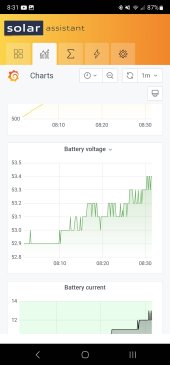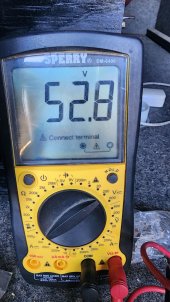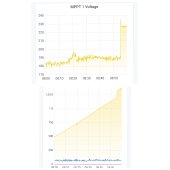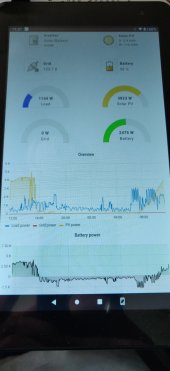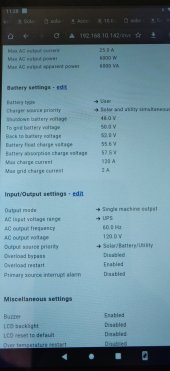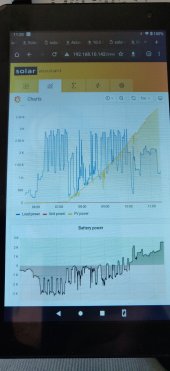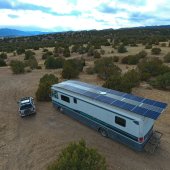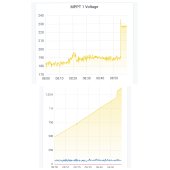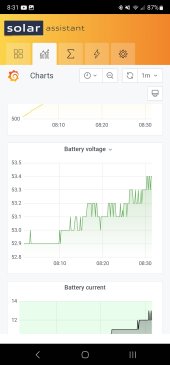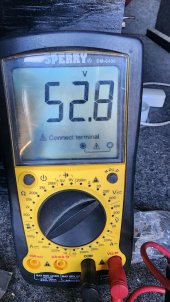Nomad Mods
New Member
We ran all kinds of loads last night and this morning in order to drop our SOC for a test. We were able to get down to 53%. The lowest we have ever been in 4 years of full time boondocking on the road. So far, it hasn't failed back to float and we are past the time and wattage when it normally happens.@Nomad Mods
I just remembered I have a 12v Renogy charger that will sit in Float mode indefinitely until the battery drops to a certain voltage. They call it “Boost Return Voltage”.
That voltage is 13.2v. When translated to 48v, that’s 52.8v. So I’m beginning to think the EG4 6000 has a similar feature where it depends strictly on a certain voltage to trigger Bulk charging again.
View attachment 142531
I think this is fine, you could probably consider your batteries fully charged at only 54.0v.
View attachment 142532
This is probably a feature to prevent batteries being raised to a high voltage too often, as it’s not really the best for the batteries health. Some people rarely charge to 100% except for top balancing the cells. But like I said, 54v could almost be considered 100%. Or at least somewhere between 99% and 100%.
I’m almost entirely convinced now that this is how the 6000ex is functioning.
One thing to not is that the inverter is reading 53.4v when my multimeter on the battery terminals is reading 52.8v. So there is some discrepancy there.
We live off of batteries. It wouldn't make sense to not charge them all the way when possible



